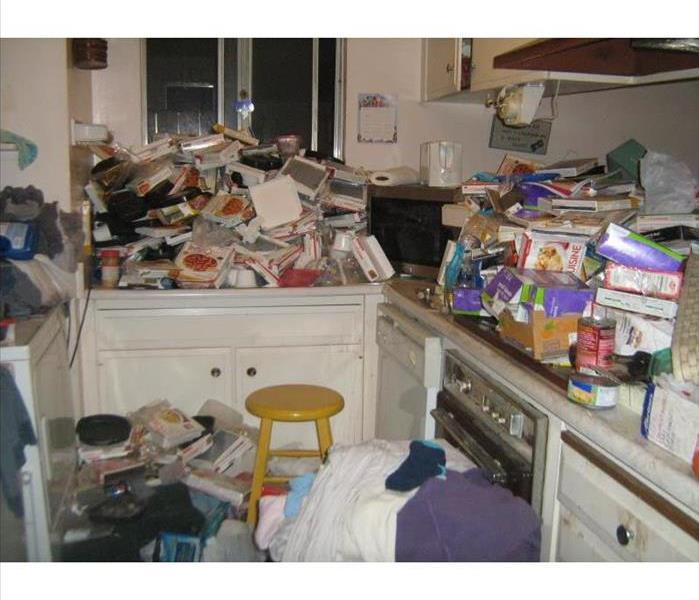Hoarding vs. Collecting
5/16/2018 (Permalink)
Hoarding vs. Collecting
Hoarding is not the same as collecting. In general, collectors have a sense of pride about their possessions and they experience joy in displaying and talking about them. They usually keep their collection organized, feel satisfaction when adding to it, and budget their time and money.
Those who hoard usually experience embarrassment about their possessions and feel uncomfortable when others see them. They have clutter, often at the expense of livable space, feel sad or ashamed after acquiring additional items, and they are often in debt.
What Is Hoarding??
The easiest definition of hoarding is when the amount of acquired clutter prohibits functionality in the home. This means that functional areas such as kitchens, bathrooms, bedrooms and dining rooms cannot be used for their intended purpose. There are 5 levels of hoarding, 1 being minor clutter and 5 being blocked rooms, pathways, animal/human waste, limited ingress and egress, etc. Remember level 5 hoarding cases do not happen overnight, so a level 2 or 3 can quickly become a level 5 if proper methods are not utilized to prevent it.
Hoarding affects all types of people, young and old, male and female. The type of clutter that is found within a household often times reflect the interests, hobbies or career of the individual, although sometimes the type of clutter may seem completely random, also. Either way, the fact of the matter is that the hoarding is affecting the individual’s life, and may be affecting those surrounding them as well. In the end, the hoarder’s lifestyle may be dramatically altered, ranging from a limited social life to being cut off from family and friends as a direct or indirect result of hoarding. This ultimately leads to the hoarder becoming more and more attached to the clutter that surrounds them, relying on their “stuff” for social interaction and comfort. In the case of animal hoarders, this may be truer, with the hoarder finding solace and companionship in their pets.
Types of Hoarders
- ANIMAL HOARDING
- BIBLIOMANIA (HOARDING OF BOOKS) / INFORMATION HOARDER
- SYLLOGOMANIA (HOARDING OF TRASH/GARBAGE)
- LARDER HOARDING (HOARDING OF FOOD)
- RECYCLERS
- COLLECTORS
- SHOPAHOLICS
If you or someone you know has a hoarding situation, give us a call to see if we can help make it “Like it never even happened.”

 24/7 Emergency Service
24/7 Emergency Service
